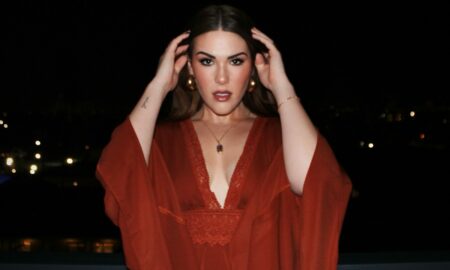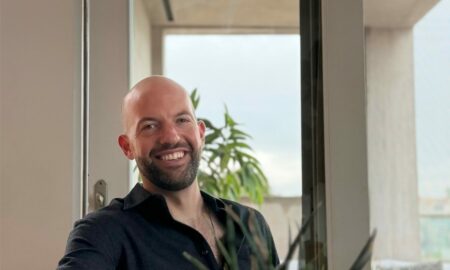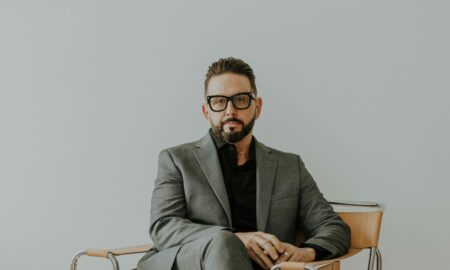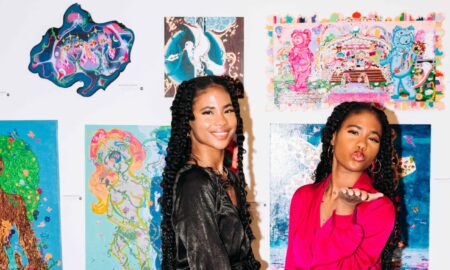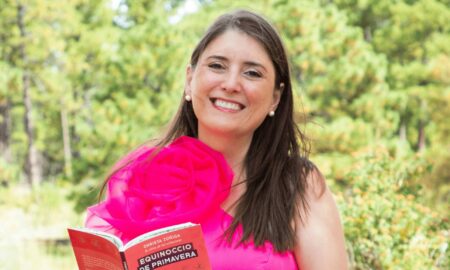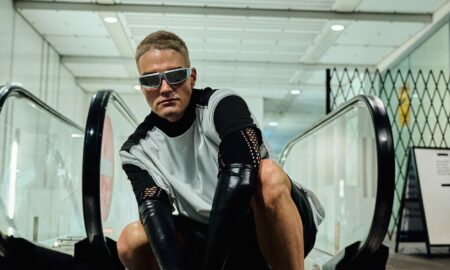
Today we’d like to introduce you to Jose Ocano.
Jose, please share your story with us. How did you get to where you are today?
From a very early age, pets have given me comfort. My dad was in prison for much of my childhood and my mom struggled to raise me and my brother alone. We didn’t have much –our humble, some would say dilapidated, one-bedroom adobe house was sparse and full of chaos – but we did have pets and they were my best friends. Especially Guantes, our German Shepherd, whom I would play within the yard and snuggle with- He was my constant companion.
Along with mariachi music and school, caring for Guantes gave me something positive to focus on so I didn’t give in to the temptations of drugs or gang life that afflicted so many in my neighborhood, including my younger brother. When my father was released from prison, it was a challenge to reconnect. He had become very religious and I realized I was gay, so I was scared to come out to him. To his credit, my father wholeheartedly accepted me and did what he could to be a parent to me again. That was cut short when I was 16 and my father died suddenly of a heart attack.
Shortly thereafter, I was preparing a memorial collage and came across a picture that stopped me in my tracks. It was me as a toddler, hugging Guantes tightly with a thousand-watt smile. I had been struggling to figure out what to do with my life and there it was, right before me. I would help the animals that helped me when I needed them most. They saved my life, so I made it my mission to save theirs.
My first job in animal welfare was at age 18 as a shelter technician for Pima Animal Care Center (PACC) in Tucson, Arizona, which took in more than 30,000 pets each year. The first day on the job involved killing dozens of perfectly adoptable pets due to lack of space since more was coming in than going out. I strongly considered leaving but decided to stay and work for change at the county facility, which at the time was killing most of the pets that entered the shelter. After that first day, I understood the importance of working within the broken system in order to build the relationships, knowledge and credibility to effect true change.
As I moved up the ladder and shared this mission with staff, an animal control officer named Keli came up to me and said, “No one will ever change this place. You’re wasting your time. You should go work for the humane society.”
During my tenure, me and my team focused on shifting the internal culture and implementing progressive adoption, rescue, community cat and volunteer programs to increase live outcomes and decrease intake, which has declined to 17,000 pets per year. In my last role at PACC, as Executive Director, I helped launch a Pet Support Center and overhaul the shelter’s medical and shelter operations which pushed the open-admission shelter to become one of the most progressive and innovative shelters in the country.
We had achieved the impossible and I decided it was time to move on so I could affect national change with Best Friends Animal Society. On my last day at PACC, I was walking to my car when Keli came up to me. “I wanted to tell you apologize and tell you I was wrong. And I’m glad I was wrong.” It was the perfect farewell. Originally, I joined Best Friends Animal Society as the new Pacific Regional Director in 2017.
In this role, I worked with animal welfare groups in California, Washington, Oregon, Hawaii and Alaska to support them in implementing lifesaving strategies, policies and programs to achieve No-Kill in their communities. I also led the No-Kill Los Angeles initiative which focuses on bringing together passionate individuals, city shelters and an entire coalition of animal welfare organizations to end the killing of homeless pets in L.A. city shelters.
The first part of my career was focused on saving pets, but through that, I realized the importance of creating a healthy work culture for the staff, volunteers and other stakeholders. By supporting them in meaningful and deliberate ways, we are able to maximize our collective impact, which is why I’m so excited to be in my new role of Sr. Director of Culture and Talent at Best Friends. Not killing animals is right for them, as well as people. It’s not fair to ask people to take life from animals that are healthy and treatable. It’s inhumane for everyone. I feel like this is what I’m meant to do with my life.
Overall, has it been relatively smooth? If not, what were some of the struggles along the way?
While the road has been incredibly meaningful, gratifying and full of purpose, it has been insanely challenging. Animal Welfare is a complicated and nuanced industry. People’s passion and conviction can be misguided and intense. There’s also a lot of complex social issues which cause the crisis of animals dying every day in shelters.
In this industry, we no longer can identify things like overpopulations and “people just don’t care” as main causes for why animals end up in shelters. Access to affordable vet care, housing and poverty are huge indicators as to why pets end up in shelters-issues that require more thoughtful and well-rounded solutions. For decades we have made the public the problem because playing “hot potato” with blame is an easy default, and while the industry is evolving to be more people-friendly, something Best Friends has led the way on.
We still have a lot of people who say things like “I love animals but hate people”-a mindset that prevents many people from being helped and subsequently, their pets, too. So one of my goals is to find a way to help humans be as compassionate towards each other as we are to animals.
We’d love to hear more about your organization.
Thirty-five years ago, a group of people made a leap of faith to realize a vision that they had long shared — to create a sanctuary for abandoned and abused animals. This was the logical extension of the rescue and advocacy work they had been doing for years. Little did they appreciate that their endeavor would catapult them to the forefront of a fledgling movement to end the killing of 17 million dogs and cats who were dying in our nation’s shelters annually at that time. With little money, no master plan, few construction skills and countless lives hanging in the balance, they set out to address a local aspect of a much larger problem. What they created instead was the largest no-kill animal sanctuary in the world and a national movement to end the killing of companion animals.
Looking back now, it was a watershed moment for animal welfare. Yet to the founders of Best Friends Animal Society, it wasn’t about carving a place or moment in history, it was simply about doing the right thing for creatures who could not speak or act on their own behalf. The founders sought a meaningful spiritual life and they held to an understanding that the spiritual is expressed through kindness to those most in need — the animals and the earth.
Today, the number of animals being killed in our nation’s shelters is down to around 733,000 per year. It’s still a problem. Yet the work inspired by the founders of Best Friends has yielded a movement to Save Them All, creating a significant cultural shift in how animals are treated. That movement, rooted in the simple notions of right versus wrong, kindness over killing, individual value over faceless numbers, has taken hold in all corners of the country, from Los Angeles to Salt Lake City to Brown County, Indiana. Today, over 4,000 communities around the country are considered “no kill.”
The story of the founding of Best Friends and of its creators can be compared to other pivotal social movements: John Muir and the Sierra Club; Jane Goodall and the Jane Goodall Institute’s preservation of species. It is also a story comparable to the beginnings of other iconic brands like Apple and Nike. Steve Jobs, seeking to get a computer into the hands of everyday people, started Apple in his garage; Bill Bowerman, a University of Oregon track and field coach who wanted to improve the performance of his athletes, joined with avid runner Phil Knight, who had an MBA, to create Nike. The story of Best Friends is one to be shared with anyone who might be inspired by the power of a belief and how that belief can change attitudes, transform lives and create a better world.
What is “success” or “successful” for you?
Every day, nearly 2,000 dogs and cats are killed in animal shelters across the country, just because they don’t have safe places to call home. It’s time to adopt change and Best Friends Animal Society is leading the way.
Besides running the nation’s largest no-kill sanctuary for companion animals, Best Friends provides adoption, spay/neuter and educational programs nationwide; manages the Best Friends Network, comprising of thousands of animal welfare organizations working toward no-kill; and publishes Best Friends magazine, the nation’s largest and most beloved general-interest animal magazine.
Our goal is to make America No-Kill by 2025. You can help by adopting, fostering, spaying or neutering your current pets, volunteering, donating, or sharing about homeless pets on social media. Learn more at www.bestfriends.org.
Pricing:
- Adoptions start as low as $25 for cats and $100 for dogs. Best Friends and NKLA also have adoption promotions throughout the year, so make sure to check www.bestfriendsla.org for current specials.
Contact Info:
- Address: Best Friends Lifesaving Center
15321 Brand Boulevard
Mission Hills, CA 91345
NKLA Pet Adoption Center
1845 Pontius Avenue
Los Angeles, CA 90025 - Website: bestfriendsla.org
- Phone: 818-643-3989
- Instagram: https://www.instagram.com/bfas_la/
- Facebook: https://www.facebook.com/bestfriendsanimalsocietyLA/
- Twitter: https://twitter.com/BFAS_LA
- Yelp: https://www.yelp.com/biz/best-friends-mission-hills








Suggest a story: VoyageLA is built on recommendations from the community; it’s how we uncover hidden gems, so if you or someone you know deserves recognition please let us know here.













